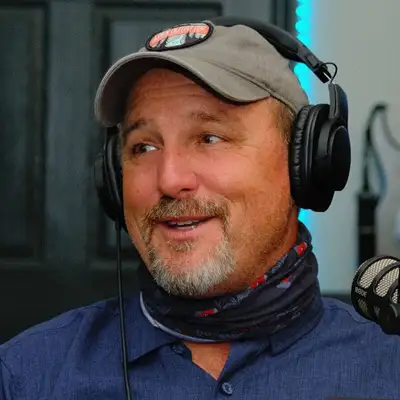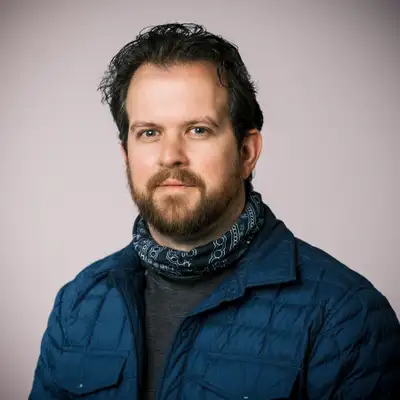- Keith and Shannon discuss starting seeds for various plants including flowers, trees, and vegetables.
- Seed starting can be challenging; success comes from good direction and proper technique.
- Start with an open flat, plant seeds in rows, and mark each variety.
- Use vermiculite as a top layer for seeds to retain moisture and encourage growth.
- Use LED or fluorescent lights to provide ample light for seedlings and prevent weak stems.
- Transition seedlings to larger containers or the garden once they are a month old and have strong roots.
- Harden off plants by introducing them to outdoor conditions gradually, including wind and temperature changes.
- Some seeds, like beans, corn, peas, and leafy greens, can be directly sown in the garden.
- Use humidity domes or bags to maintain moisture levels for seedlings.
- Starting seeds is a fun and educational activity for kids, encouraging them to eat homegrown produce.
- Potatoes are an easy and rewarding plant to grow, with many varieties available.
- Use a seed starting mix and pre-moisten it before planting seeds to improve success.
- Cool season veggies can be planted twice a year, while warm season veggies go in after April 15th.
- Starting seeds early in containers can lead to earlier harvests for certain plants.
- Encourage everyone to try growing their own veggies and involve kids in the process.
Creators and Guests
What is In The Garden?
In the Garden with Keith Ramsey is a podcast aimed at helping you grow and maintain a beautiful and healthy garden and landscape.
Each podcast will focus on a new specific topic. Check back every two weeks for the latest episode!
[00:00:00] Good morning, Keith at garden supply company. Shannon's here with me today. We're talking about Just starting seeds and grow and veggies. And it could be, Flower seeds, tree seeds, literally anything. I always find it completely fascinating when people haven't started seeds. I've grown seeds. Most of my life.
[00:00:34] I'm always fascinated when you put seeds in soil and all of a sudden, watching every step of the way, that the first curl up. Yup. Exactly. And the leaves popping out of a seed. It's just a miracle every single time. I see it. And I've done it a thousand times.
[00:00:49] I think more people fail with it then our successful. I would say that from personal experience. Yeah. And the key to it is coming in and getting good direction, but Just broadly speaking. If you start with an open flat. You can actually see it like rose in a garden.
[00:01:03] And then mark those rows with each variety, so you could be putting 25 tomato seeds. In a row in the short rent run of a flat. On about an inch and a half a soil, and then topping it with, vermiculite just just whatever the seed pack says, it could be a an eighth of an inch. It could be a half an inch of vermiculite.
[00:01:22] Vermiculite and holds a perfect moisture for seed growth. And then once the seeds start to germinate it's keeping a light. On top of them. That was something you taught me that I didn't know before I worked for you, the biggest loss of seeds is when they sprout, they're stretching for light, the stems, aren't strong.
[00:01:40] Yep. And they're weak as can be. And then you put them outside and the first little bit of wind, or they damp off you. From too much moisture. But the, the celly long distance, just very low it's very long. It's a weak stem and it's just not a successful scenario. So if you use an led light or a fluorescent old fluorescent light,
[00:01:59] You can put it almost an inch from the soil. Right on top of the flat won't hurt because the lights don't get hot. And and then when the, and leave them on 24 hours a day. Plants grow in the dark at night. And so if you keep that light on there, you don't get the long Jason, you get these nice fat.
[00:02:17] Healthy leafy plants. And then you've got a row say of 25 tomato plants. Once they're a month old, you can pull that row up and just, you can manhandle them, you can pull them apart. It doesn't matter. You're separating the roots and then you move them into a bigger container or.
[00:02:34] Other individual cells. Yeah. Yeah. Or move them. Straight out into the garden, potentially, I like to put them in a bigger cell pack or in a four inch pot and let them grow on for another few weeks and then, and then set them out. But, and that way they've got a bigger root mass.
[00:02:48] And I think hardening off is important. A lot of people don't understand that terminology, but introducing it to the warmth, even sure. Outside the wind a little bit during the day and then bringing it in at night. So it's not getting so cold just to get it used to. Sure. A fan on it for a few minutes.
[00:03:06] The wind draws plants out really fast. Put a fan on it for a few minutes. Get the stems hardened off and get the leaves, ready to be, put outside and deal with that kind of stuff. One thing that I've always struggled with because I'm a nurturer at heart. And when I've got one little cell with a couple of.
[00:03:24] Plants or seedlings in it. It's hard for me to pinch them off. Yep. And choose the strongest. So choose the strongest and have a really healthy plant and, or let them grow on. And then, Separate them. Pull them apart, but wait until they're, when. And you've had a light on them. You've had a fan on them and they're really hard in there.
[00:03:41] They can do what they need to do. And then there's a lot of seeds that when you're talking about seed starting, that don't need to be started. I can just go right in the ground, right into the ground, your bigger, most, any of your bigger seeds, your beans, your corn, your peas,
[00:03:55] The leafy greens. Oh, sure. Yeah. Some. Real small leafy greens. You can just direct seed them into the ground and get them going. Holding humidity to them with vermiculite or. Dry, cleaner bag, even, spread a dry cleaner back out over the lettuce after you've just brushed it into the soil.
[00:04:12] And then staking it down that holds the holds of the moisture to the seed. And then once it germinates, just pull it up and remove it. I hadn't heard that one before. It's a greenhouse basically. So that, that works really well. And that's another thing is holding humidity to the plants.
[00:04:25] If you can't water them, consistently. Or if it's a plan that needs a little bit more humidity, you. Humidity dome. Then putting the light right on top of the human of you dumb. That works really well. That kind of bothers you a lot of time, in between waterings and, you forget about them one day.
[00:04:39] Yeah, they've still got that humidity and it's recycling in the tray and I love that a lot of our humidity domes have vents, so you can let some of that moisture out. So they don't rot. Yup. You can, over-water a seed, but the one thing that, it's kinda like grass planting, grass seed. The one thing about seeding and germination rate.
[00:04:56] Is that if a seed, if the little cuddle Laden root pops out of the seed. And it starts to, and it hasn't reached the soil and it hasn't gotten established and you run into a. Like a day of dry or an hour of dry. You may lose that seed. It's really keeping moisture to it until they germinate. And then once they germinate.
[00:05:15] Then you can do, then you can start to let them dry out and they will. That's when they're, that's, when you're hardening them off and you don't want them to, you don't want them to be wet or to rot. Planting seeds is a, it's a fun. Activity. It's super fun with kids. I think I agree.
[00:05:30] Yeah, I think it's so rewarding for them to see something start to grow. So beans, peas, those are so fast. A lot of classrooms use those. Yeah. And then when you're teaching you, I. And, you're teaching your kids out a garden and how to start seeds. I think I it's rare that a, kid's not excited about eating carrots that they grew.
[00:05:48] Exactly. Yeah. Or the something that they picked out of the garden. Potatoes. Starting potatoes. I always say is, It's an easy way. We sell every type, every color of a potato. You. You can grow. So I love those blue ones. Yeah. I mean it's blue, yellow. Just read. Yeah. All kinds of, red skin with what really white potato. And then I always tell parents it's like having an Easter egg hunt in June.
[00:06:11] As the foliage starts to die back, they can dig the potatoes up and the kids are twice as excited about eating potatoes instead of French fries or whatever. It really is a good way to expand their palate. Yep. And it's just a. Great sustainable way to have organic food and know where your food's coming from kind of thing. Absolutely. Which we are all more aware of nowadays. Yeah.
[00:06:32] We have a great seed starting mix. We do. One thing I would like, I always encourage people to do is support into a bucket and get it wet. Nice and wet first. It seems if you just put it in dry and water, the seeds in it. Yep. Yep. So I really love that. Moistening it offers. Yep.
[00:06:50] That does make a difference or put it in the tray and missed it for a long period of time. Sure. Yeah. Cause otherwise you're floating the seed and then. So it ends up to deeper. And your success. Isn't going to be quite there. Veggies in general. It's there's a couple of times a year. You can plant them.
[00:07:07] All the cool season veggies go in around February 15th to March 15th. And and then again, you can do a second crop. From August 15th to September 15th, which both of those times seem odd for planting stuff. Most or all of the warm season veggies can go in after April 15th. Okay. Having people start them earlier or buy them and put them in bigger containers before they put them in the garden is sometimes nice because you'll end up with tomatoes and peppers and that kind of stuff earlier.
[00:07:35] A little early. Yeah. But anyway, we just hope everybody gets out there and gets kids involved and grow some of your own veggies. Yeah.

